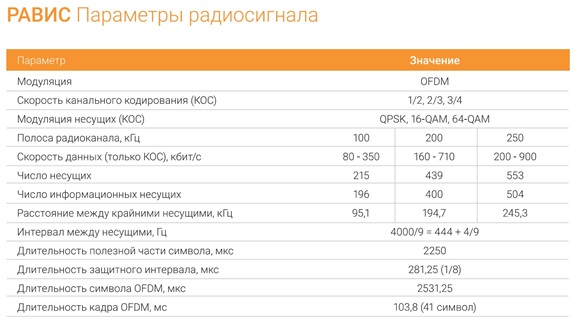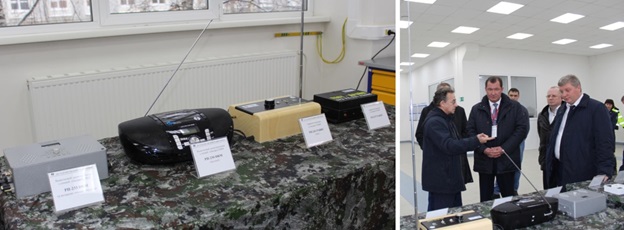RAVIS and DAB at a low start. DRM offended. The strange future of digital radio of the Russian Federation
 On July 25, 2019, without warning, the State Commission on Radio Frequencies (SCRF) gave the domestic RAVIS standard the ranges of 65.8–74 MHz and 87.5–108 MHz for the organization of digital radio broadcasting. Now, a third has been added to the selection of two not-so-good standards.
On July 25, 2019, without warning, the State Commission on Radio Frequencies (SCRF) gave the domestic RAVIS standard the ranges of 65.8–74 MHz and 87.5–108 MHz for the organization of digital radio broadcasting. Now, a third has been added to the selection of two not-so-good standards.
In the Russian Federation there is a special body dealing with the distribution of the available radio range between those who want to use it. The investment policy of companies and the availability of various wireless communication and broadcasting services to the population largely depend on its decisions.
Since the mid-zero years, there has been a sluggish preparation for the transition to digital radio and television broadcasting. And the longer this process drags on, the more surprising is the SCRF’s strategy on this issue (if any).
On April 16, 2018, the State Committee for Radio Frequencies decided to develop digital radio at frequencies 175.872-228.128 MHz according to the DAB + standard (in general, this range is intended for TV, but was allocated for digital radio). The permit is valid for 10 years.
On September 11, 2018, the SCRF decided to develop digital radio at frequencies of 65.9–74 MHz and 87.5–108 MHz according to the DRM + standard. The permit is valid for 10 years.
So all available frequencies were distributed between two competing standards. It could be assumed that this is necessary for pilot projects. However, these decisions were already made based on the results thereof. That is, it was actually permission to create two competing and incompatible systems.

Image: from the website of the Russian Academy of Radio
And suddenly, on July 25, 2019, without warning, the State Commission for Radio Frequencies allocated the ranges of 65.8–74 MHz and 87.5–108 MHz to the domestic RAVIS standard for organizing broadcasting of digital radio. Also for 10 years. Previously, these frequencies were intended for DRM +, which the agency called its favorite .
So what kind of beast is this, RAVIS? Let's start with dry numbers and developer statements:

Picture: from the site of the developer company "Sad-Com"
The RAVIS system provides the transmission of video, audio and other accompanying information for fixed and mobile reception. RAVIS provides:Thus, the domestic standard involves combining the possibility of broadcasting digital radio with high-quality sound and medium-quality digital TV (900 kbps video stream, instead of 15 audio streams on the channel). Naturally, there is the possibility of broadcasting text and technical messages, graphic slides.
- increasing the quantity and quality of transmitted sound programs (10-15 high-quality sound programs in one radio channel);
- introduction of new services, including video broadcasting, with steady mobile reception;
- reduction in broadcast power consumption;
- increasing the coverage area with a single transmitter, the ability to create small and large single-frequency networks.
The characteristics of the proposed broadcast standard look very good, really better than the alternatives ( Habrapost with a DAB review ). By the way, the developers did not forget to show their work in all its glory against the pale background of competitors.

Picture: from the site of the developer company "Sad-Com"
The key persons of Sad-Com, the developer company of the RAVIS standard, are Victor and Alexander Dvorkovichi. Relatives of former Prime Minister Arkady Dvorkovich (now chairman of the Skolkovo Foundation, chairman of the board of directors of Rusnano). Dvorkovichi own 2/3 of the company and are directly involved in development. By the way, the company "Sad-Com" is a resident of Skolkovo.
Apparently, it is Sad-Com that plans to become the leading or even the only manufacturer of the electronics necessary for organizing broadcasting and signal reception according to the new standard. So, together with the enterprises of the military industry, experimental or small-scale production of equipment has already been established (for itself, the cost of the receiver is $ 100 with the prospect of reducing to $ 40-50 in mass production). There is no information on how competitive the technical specifications of products are at such a price. As well as about the possibility and desire to implement the support of the standard by foreign manufacturers of consumer electronics.


Images: from the site of the developer company "Sad-Com"
The consequences that await the radio market are also interesting. So, all experts unanimously declare that the players are not ready to increase competition, which will arise as a result of a significant reduction in the cost of entry. Several hundred free and cheap radio broadcasting channels, as well as several dozen TV channels that may arise as a result of switching to digital broadcasting, will cut the advertising cake too thinly. So, in the first quarter of 2019, the volume of advertising on the radio amounted to 3.4 billion rubles.
At the same time, experts do not say a word about the opportunities that will arise with the advent of new technology: targeted advertising, new advertising formats (in photos, text and slides), expanding the general audience by improving the sound quality and variety of stations. The probability of creating an alternative TV broadcasting network focused on drivers and with the possibility of local variation in the content of the broadcast looks very intriguing.
However, there is a dubious consequence - the likely occurrence of broadcast operators. So, the standard assumes broadcasting with a multiplex (one antenna and one set of equipment broadcast simultaneously 10-15 radio stations). Probably, individual stations will not buy and support all the equipment that can broadcast 15 programs when they need only one or two. Most likely, there will be operators who own a network of transmitters and rent a radio range, which will lease stations to a band. And they will determine the rules for (non) admission to the broadcast network.
How often do you use the radio? Are you ready for a complete replacement of the receivers, if RAVIS is adopted, or would you like to switch to DAB + (probably already supported by your system)?
All Articles